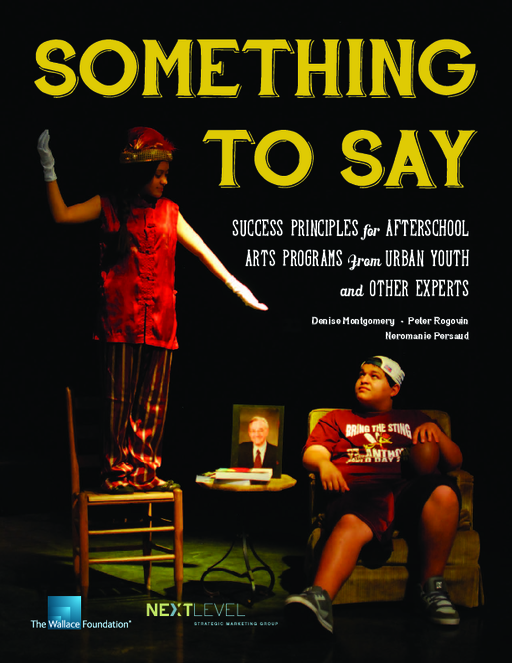- Author(s)
- Denise Montgomery, Peter Rogovin, and Neromanie Persaud
- Publisher(s)
- The Wallace Foundation
Research Approach
Researchers conducted interviews with more than 200 students from low-income households (ages 10 to 13), their families, directors of successful programs, and youth arts education experts, and gathered insights from 48 successful programs. They analyzed more than 100 literature sources and interviewed 22 key opinion leaders to identify the top 10 traits of high-quality arts programs.
Most studies on afterschool arts programs focus on the limited number of high-quality programs, but researchers argue that the issue is not unmet demand. By relying on a market research model that looks at the specific wants of students and their families, programs can better serve their target market. The researchers recruited and interviewed parents and students from low-income neighborhoods of seven cities. Some students kept photo journals to document their activities and thoughts.
The researchers also identified 48 exceptional afterschool programs, most of which were focused on the arts, and selected eight organizations for case studies. The case studies included site visits, staff and participant interviews, and analysis of program materials such as plans, contracts, and evaluations.
Finally, the study separated key opinion leader and case study research from consumer research. The former relied on experts who provided recommendations, while the latter independently assessed what young people and their parents wanted and how they made decisions. More than two dozen focus groups and ethnographic interviews with over 200 tweens and teens, along with parent and caregiver groups, were conducted and compared with findings from the key opinion leader and case study research to develop 10 principles for successful afterschool arts programs.

